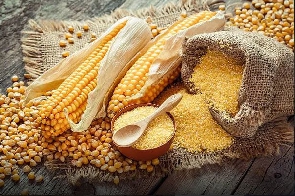 Aflatoxin contamination of above 20 percent concentration in grains is considered too high
Aflatoxin contamination of above 20 percent concentration in grains is considered too high
As high as 40 percent of grains sold in the markets are said to contain unacceptable levels of aflatoxin contamination, posing serious health implications for consumers.
Aflatoxin contamination of above 20 percent concentration in grains is considered too high, but grains on the local market are said to contain double this percentage or more.
Aflatoxins are naturally occurring compounds that are produced from the moulds Aspergillus flavus and Aspergillus parasiticus, and are known to be potent human carcinogens. Their toxicity may result in nausea, vomiting, abdominal pain, convulsions and other signs of acute liver injury. Long-term exposure also leads to various complications, like growth retardation, cirrhosis and hepatocellular carcinoma.
The high levels of contamination not only pose a threat to human health but also affect farmers and grain dealers greatly, as most companies and manufacturers which use grains as raw materials prefer imported ones.
For instance, aflatoxins – a family of toxins produced by certain fungi that are found mostly on agricultural crops, especially grains – have been identified major contaminants in food sold on the local markets; and are responsible for about 18 percent of all maize production losses in the country.
These infections pose serious economic concerns as they account for about 319,000 tonnes – representing 18 percent – of annual maize production losses.
Absence of quality testing standards and lack of premium value on grains with very low aflatoxin levels, as well as poor storage among others, are accountable for the current situation.
Intervention
To mitigate this situation, the African Development Bank (AfDB) in partnership with Ghana Commodity Exchange (GCX), Ghana Standards Authority, Ministry of Food and Agriculture and Department of Agriculture-University of Ghana, with financial support from Korea Africa Economic Cooperation Fund (KOAFEC), has launched a national programme to educate and sensitise stakeholders in the agriculture value chain on aflatoxins.
Senior Research Economist, AfDB, Francis H. Kemeze, stressed that the project stands on the promise that proper grading and certification of grains in sub-Saharan Africa (SSA) can be leveraged to promote investments in grain quality enhancement, and increase consumption of safe and healthy food.
“The need for establishing rules, grades and certification in Africa’s grain markets is becoming crucial to govern and foster national and regional grain transactions in the new era of African Continental Free Trade Area (AfCFTA), and to expedite the set-up of a commodity exchange.
“We want to know whether and to what extent the provision of grain quality testing, grading and certification along the value chain will improve farm income and empower farmers in their marketing negotiations, allowing them to receive higher prices for their high-quality grains; and also promote the adoption of inputs and practices which increase production of grains suitable for consumption, high-value processing and exportation,” he said.
Deputy Minister of Agriculture, Yaw Frimpong Addo, mentioned that, indeed, aflatoxins contamination is very high on the market – posing a serious threat to health and livelihoods. Hence, the ministry is excited about such an initiative – which would go a long way to help establish standards and ensure the sustainability of grain production.
Aflatoxin contamination above 20 percent concentration in grains is considered too high, but grains on the local markets are said to have double this value and even more. Eradicating these problems will require pragmatic measures ranging from the land preparation stage to planting, harvesting and post-harvest treatment, as well as storage and processing.
Dean-Department of Agriculture, University of Ghana, Prof. Irene Susana Egyir, highlighted some key components of the programme such as: training and sensitisation of farmers; market women, traders of grain products; food sellers and consumers at the farm gate, remote areas and urban centres.
Under the initiative, laboratories for testing aflatoxins will be established in farming communities to help in testing and grading before products enter the market.